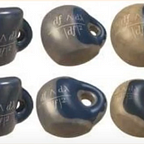First, let’s assume that I have an operation a ⊙ b, where a and b are two random symbols, and ⊙ is an arbitrary operation. In order to make a ⊙ b have a valid answer (let’s say, a ⊙ b = c is a valid construction), we need to show that ⊙ is a well-defined operation.
For any well-defined operations, if I take a value a’ that is equal to a, and a value b’ that is equal to b, then a ⊙ b = a’ ⊙ b’ = c.
Note that a’ and a might not look exactly the same, but their value needs to be equal. For example, 1/3 = 2/6, even though 1≠3 and 2≠6. The numerical values of these 2 fractions are equal, because 1, and as a result, any operations on fractions (addition, multiplication, square-root…) are well-defined operations. If you substitute the value of 2/6 to where 1/3 should be, you will not get a different answer.
Claim
Addition (+) is well-defined on fractions.
Proof
To show that + is well-defined, we need to show: a/b + c/d= a’/b’ + c/d, if a/b = a’/b’, for any a, b, c, d, a’, b’ ∈ Z
If a/b = a’/b’, following the definition of fractions, ab’ = a’b. Assume, for the sake of contradiction, that a/b + c/d ≠ a’/b’ + c/d. Then (ad + bc)/bd ≠ (a’d + b’c)/b’d, and (ad + bc) • b’d≠ (a’d + b’c) • bd.
With distributivity and commutativity, the relation is rearranged into: ab’d² + bb’cd ≠ a’bd² +bb’cd. With the cancellation law, we have ab’d² ≠ a’bd². Since d ≠ 0, we have ab’ ≠ a’b, a contradiction. Hence, + is well-defined.
